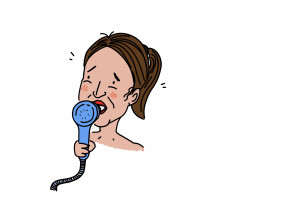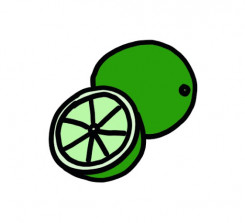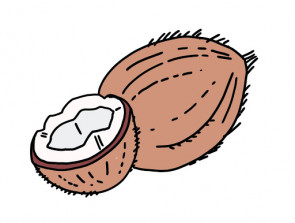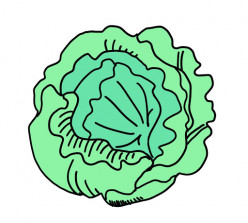Your baby is now officially an embryo and is about the size of a poppy seed.
Please visit www.nhs.uk/conditions/pregnancy-and-baby/4-weeks-pregnant/ for more information.
Local Maternity and Neonatal System
View navigation
Labour and birth
Labour can be painful – it can help to learn about all the ways you can relieve the pain.
It's also helpful for whoever is going to be with you during your labour to know about the different options, as well as how they can support you.
Ask your midwife or doctor to explain what's available so you can decide what's best for you.
Write down your wishes in your birth plan, but remember you need to keep an open mind. You may find you want more or less pain relief than you'd planned, or your doctor or midwife may suggest alternative pain relief to help the delivery.
You're likely to feel more relaxed in labour and better placed to cope with the pain if you:
There is lots of evidence to suggest that being in water can help you relax and make the contractions seem less painful. Ask if you can have a bath or use a birth pool. The water will be kept at a comfortable temperature, but not above 37.5C, and your temperature will be monitored.
There are some circumstances where using the birthing pool would not be recommended. Discuss this with your midwife or doctor if you would like more information.
The National Childbirth Trust has information on using water during labour and birth .
This stands for transcutaneous electrical nerve stimulation. Some hospitals have TENS machines. If not, you can hire your own machine.
TENS has not been shown to be effective during the active phase of labour, when contractions get longer, stronger and more frequent. It's probably most effective during the early stages, when many women experience lower back pain.
TENS may also be useful while you're at home in the early stages of labour or if you plan to give birth at home. If you're interested in TENS, learn how to use it in the later months of your pregnancy. Ask your midwife to show you how it works.
Electrodes are taped on to your back and connected by wires to a small battery-powered stimulator. Holding this, you give yourself small, safe amounts of current through the electrodes. You can move around while you use TENS.
TENS is believed to work by stimulating the body to produce more of its own natural painkillers, called endorphins. It also reduces the number of pain signals sent to the brain by the spinal cord.
There are no known side effects for either you or the baby.
Read more about TENS .
Some women may choose alternative treatments such as acupuncture, aromatherapy, homeopathy, hypnosis, massage and reflexology. Most of these techniques aren't proven to provide effective pain relief.
If you'd like to use any of these methods, it's important to discuss them with your midwife or doctor and let the hospital know beforehand. Most hospitals don't offer them for pain relief during labour.
If you want to try any of these techniques, make sure the practitioner is properly trained and experienced. Learn more about complementary and alternative medicines and how they're regulated.

This is a mixture of oxygen and nitrous oxide gas. Gas and air won't remove all the pain, but it can help reduce it and make it more bearable. Many women like it because it's easy to use and they control it themselves.
You breathe in the gas and air through a mask or mouthpiece, which you hold yourself. The gas takes about 15-20 seconds to work, so you breathe it in just as a contraction begins. It works best if you take slow, deep breaths.
If gas and air doesn't give you enough pain relief, you can ask for a painkilling injection as well.
Injections can be given into your buttock or thigh to relieve pain. Commonly used drugs are Pethidine, Meptid and Diamorphine; uses of these drugs vary across our hospitals, please discuss further with your midwife or doctor.
The injections take about 20 minutes to work, and effects last between 2 and 4 hours. These drugs are not usually recommended if you're getting close to the pushing (second) stage of labour.
There are some side effects to be aware of:
An epidural is a special type of local anaesthetic . It numbs the nerves that carry the pain impulses from the birth canal to the brain. It shouldn't make you sick or drowsy.
For most women, an epidural gives complete pain relief. It can be helpful for women who are having a long or particularly painful labour.
An anaesthetist is the only person who can give an epidural, and they are not available in midwifery led birth centres.
An epidural can provide very good pain relief, but it's not always 100% effective in labour. The Obstetric Anaesthetists Association estimates that 1 in 8 women who have an epidural during labour need to use other methods of pain relief.
To have an epidural:
There are some side effects to be aware of:
An epidural may make your legs feel heavy, depending on the local anaesthetic used.
Your blood pressure can drop (hypotension), but this is rare because the fluid given through the drip in your arm helps to maintain good blood pressure.
Epidurals can prolong the second stage of labour. If you can no longer feel your contractions, the midwife will have to tell you when to push. This means that forceps or a ventouse may be needed to help deliver the baby's head (instrumental delivery ). When you have an epidural, your midwife or doctor will wait longer for the baby's head to come down (before you start pushing), as long as the baby is showing no signs of distress. This reduces the chance you'll need an instrumental delivery. Sometimes less anaesthetic is given towards the end, so the effect wears off and you can feel to push the baby out naturally.
You may find it difficult to pass urine as a result of the epidural. If so, a small tube called a catheter may be put into your bladder to help you.
About 1 in 100 women gets a headache after an epidural. If this happens, it can be treated. Your back might be a bit sore for a day or two, but epidurals don't cause long-term backache.
About 1 in 2,000 women feels tingles or pins and needles down one leg after having a baby. This is more likely to be the result of childbirth itself rather than the epidural. You'll be advised by the doctor or midwife when you can get out of bed.
Read more about the pros and cons of epidurals .

Your baby is now officially an embryo and is about the size of a poppy seed.
Please visit www.nhs.uk/conditions/pregnancy-and-baby/4-weeks-pregnant/ for more information.

Your baby is now the size of a kidney bean and weighs 1g.
Please visit www.nhs.uk/conditions/pregnancy-and-baby/8-weeks-pregnant/ for more information.

Welcome to the second trimester!
Your baby is about the size of a small lime and weighs approximately 14g.
You have hopefully seen your midwife for your 'booking in' appointment, if you have not yet seen a midwife please make an appointment quickly, so you can have all of your choices about screening tests explained and offered to you.
Please visit www.nhs.uk/conditions/pregnancy-and-baby/12-weeks-pregnant/ for more information. You can also link to the 'Pregnancy Journey' area here.

Your baby is about the size of an avocado and weighs approximately 100g.
Please visit www.nhs.uk/conditions/pregnancy-and-baby/16-weeks-pregnant/ for more information.

Your baby has grown in length and is now the length of a small banana and weighs approximately 300g. Around this time you will be offered your '20 week' scan, also known as the 'anatomy' or 'anomaly' scan.Click here for more information about screening.
This is a also a good time to talk and sing to your bump as your baby can now hear sounds. This is great way for you and your partner/family to bond with your baby.
Please visit www.nhs.uk/conditions/pregnancy-and-baby/20-weeks-pregnant/ for more information.

Your baby has grown again to the approximate length of an ear of sweetcorn and weighs about 600g.
Please visit www.nhs.uk/conditions/pregnancy-and-baby/24-weeks-pregnant/ for more information.

Welcome to the third trimester!
Your baby is now approximately the weight of an aubergine; about 1kg and approximately 37cm in length.
Please visit www.nhs.uk/conditions/pregnancy-and-baby/28-weeks-pregnant/ for more information.

Your baby now weighs approximately the same as a coconut; around 1.5kg.
Please visit www.nhs.uk/conditions/pregnancy-and-baby/32-weeks-pregnant/ for more information.

Your baby is now around the same size as a lettuce, approximately 47cm long and weighs around 2.6kg.
Please visit www.nhs.uk/conditions/pregnancy-and-baby/36-weeks-pregnant/ for more information.

Your baby is now the weight of a small watermelon which is approximately 3.3kg and around 50cm in length.
Please visit www.nhs.uk/conditions/pregnancy-and-baby/40-weeks-pregnant/ for more information.